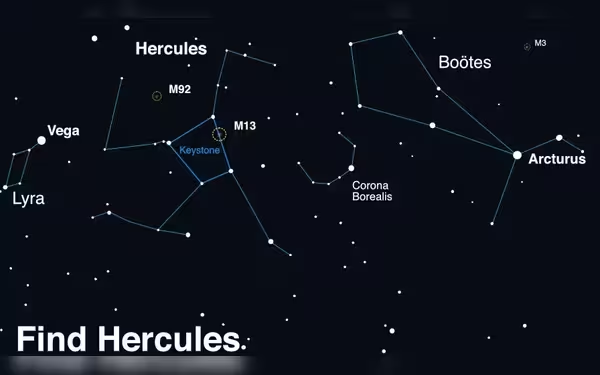Sunday, June 30, 2024 06:49 PM
Astronomers predict rare nova explosion in T Coronae Borealis system
- White dwarf star to undergo spectacular nova explosion visible from Earth
- Unique cataclysmic variable system in constellation Corona Borealis
- Insights into stellar evolution through recurrent nova explosions
 Image Credits: Smithsonian Magazine
Image Credits: Smithsonian MagazineA groundbreaking prediction by astronomers reveals an upcoming nova explosion in the T Coronae Borealis system, offering a rare cosmic spectacle visible from Earth and insights into stellar evolution.
Astronomers have made a groundbreaking prediction that a white dwarf star in the T Coronae Borealis system, located approximately 3,000 light years away from Earth, is set to undergo a spectacular nova explosion later this year. This event is expected to be visible to the naked eye, offering a rare cosmic spectacle for observers on Earth.
For centuries, astronomers have closely monitored the behavior of the binary star system in T Coronae Borealis, consisting of a red giant and a white dwarf. This unique combination of stars, known as a 'cataclysmic variable,' exhibits periodic explosive outbursts due to the gravitational interaction between the two stellar bodies.
The upcoming nova explosion is anticipated to occur as a result of the white dwarf accumulating significant amounts of material from the red giant over several decades. Once the white dwarf reaches a critical mass, a luminous thermonuclear reaction will be triggered, leading to a visible release of radiation from Earth.
Previous nova events in the T Coronae Borealis system have been observed approximately every 80 years, with the last recorded explosion taking place in 1946. Recent observations of dimming light from the star system have prompted astronomers to predict that the next nova event could happen anytime between now and September 2024.
Located in the constellation Corona Borealis, the nova explosion is expected to be visible to the naked eye for several days following the event, offering a captivating celestial display. Unlike a supernova, this nova explosion will not signify the demise of the white dwarf star, which is likely to continue its cycle of material accumulation from the red giant for future explosive events.
The T Coronae Borealis system is among a select group of five star systems known to exhibit recurrent nova explosions, providing scientists with a valuable opportunity to study the impact of these phenomena on stellar evolution. This upcoming event promises to offer insights into the dynamic processes at play within cataclysmic variable systems, furthering our understanding of the universe's cosmic fireworks.













